
Eising/Photodisc/Getty Images
Think of regular ovens as kiddie pools -- no movement, basically just big containers of water. Now, think of a convection oven as a spa that vigorously circulates hot water around every part of your body; that's the difference in conventional and convectional heat. A convection oven uses a powerful fan to circulate hot air, so any food -- roasts, bread and even delicate items like eggs -- cook about 15 percent faster. Classic baked eggs, or oeufs de cocotte, cook to an ethereal consistency in about 6 minutes in a convection, about 4 minutes faster than in a conventional oven.
Classic Oeufs en Cocotte
Heat the convection oven to 350 degrees Fahrenheit. Season a couple spoonfuls of dairy with kosher salt and nutmeg, if desired. You can use heavy cream, butter, creme fraiche, marscarpone or any other dairy product with moderate to high fat.
Add the seasoned dairy to a small tart dish, a small cocotte, a shallow ramekin or other small oven-safe dish.
Crack a couple of eggs in the dish over the dairy without breaking the yolks. You can usually fit 2 eggs in a 6-inch-wide dish.
Spoon the rest of the seasoned dairy over the egg whites, avoiding the yolks with it. Place the eggs in the oven.
Bake the eggs for 6 minutes for a runny yolk; for a firm yolk, bake them for 7 to 8 minutes. Carefully take the eggs out of the oven.
Garnish the eggs with whatever you like. Classic oeufs en cocotte get a flourish of dill, but use any fresh herb you like or nothing at all. You can never go wrong with a good cracking of freshly ground black pepper over eggs, though.
Baked Egg Variations
Saute aromatics and pungents in a bit of olive oil or butter. This is your variation, so use whatever you like. Garlic, shallots, leeks, peppers -- pretty much any ingredient you can think of -- are all fair game. Set the aromatics and pungents aside.
Cook the primary and secondary flavoring ingredients if needed. You only have to cook items like sausage, bacon or poultry here, but you can also saute chopped vegetables if you like. Set the ingredients aside.
Ready additional flavoring ingredients that don't require cooking. Items like cured meats, mushrooms, smoked salmon and cheese fit into this category.
Add the ingredients to a buttered ramekin, tartlet dish or cocotte and season them to taste. You can layer the ingredients to your liking or mix them together and spoon them into the dish, whatever you feel like. Heat the oven to 350 F.
Crack an egg or 2 over the ingredients and season with kosher salt. Place the dish of eggs in a larger dish and add enough water to reach about halfway up the sides. Place the eggs in the oven.
Bake the eggs for 7 minutes for a runny yolk and for 8 to 9 minutes for a firm yolk. Carefully take the eggs out of the oven.
Garnish the eggs with freshly chopped herbs, a grating of fresh parmesan, lemon zest or whatever you like and serve immediately.
Scrambled
Heat the convection oven to 350 F. Butter a baking dish.
Whisk together eggs and milk or cream until homogenous using a proportion of 1 to 2 tablespoons of dairy for each egg. If you beat the eggs vigorously, you'll have fluffy curds and a souffle-like consistency; if you roll the whisk between your palms gently to beat the eggs, or French style, you'll have a custardy consistency.
Stir in salt and pepper to taste, and add small pinches of cold butter for a creamy consistency, if desired. Pour the eggs in the baking dish and place the dish in the convection oven.
Bake the eggs for 4 or 5 minutes, or until they start to set. Pull the oven rack out and pull the eggs towards you using a spoon or spatula to stir them. Make sure to get the eggs off the sides of the dish, too.
Bake the eggs an additional 10 minutes or until they reach the desired doneness. Take the eggs from the oven and serve immediately.
Related Articles
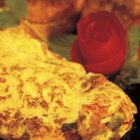
How to Make Omelets With Baking Powder

How to Make Your Deviled Eggs Look Great

How to Cook Eggs in Cupcake Pans

How to Make Quick Easy Egg Salad

How to Cook Catfish Eggs

What Happens When You Forget to Put ...
How to Make an Overeasy Egg
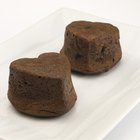
What Is a Souffle Dish?

Crock Pot Cooking for Breakfast
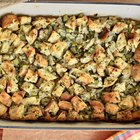
Mom’s Classic Make-Ahead Bread Stuffing

Using a Convection Oven to Cook ...
Homemade Mozzarella Sticks with String ...

Brownie Bottom Butterscotch Cheesecake ...

How to Substitute Knox Gelatin for Eggs

How to Cook Sunny Eggs in the Microwave
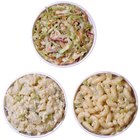
Miracle Whip & Mayonnaise Macaroni Salad
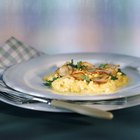
The Best Types of Pans to Cook ...

How to Cook Eggs Sunny Side Up Without ...
Easy Homemade Chocolate Chip Cookies ...

How to Make Scrambled Egg With Spinach
References
Tips
- Using a transparent or clear cooking dish will make it easier for you to see when the eggs are fully cooked.
Warnings
- Eating undercooked eggs could put you at risk of a foodborne illness. To be completely safe, always cooked eggs so that there are no runny parts.
Writer Bio
A.J. Andrews' work has appeared in Food and Wine, Fricote and "BBC Good Food." He lives in Europe where he bakes with wild yeast, milks goats for cheese and prepares for the Court of Master Sommeliers level II exam. Andrews received formal training at Le Cordon Bleu.
Photo Credits
Eising/Photodisc/Getty Images